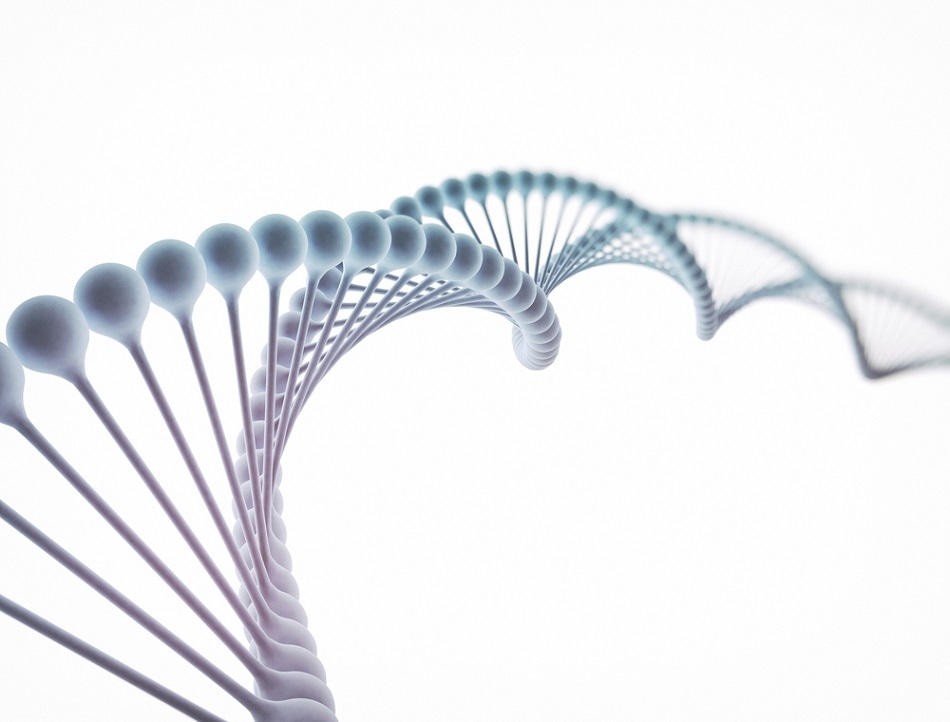Sep 26 2017
Researchers are relentlessly expanding their cache of techniques to decode the spatial organization of biological structures. Using microscopes, they can currently visualize individual macromolecular components within protein, DNA or other complexes.
 Jezper/ Shutterstock.com
Jezper/ Shutterstock.com
However, this resolution normally requires advanced equipment applied to specially-processed samples, and it is hard to concurrently watch many types of molecules, particularly at high density and throughput, or dynamic interactions.
Auto-cyclic Proximity Recording
This video explains how “Auto-cycling Proximity Recording” works to identify pairs of nearby molecular targets and how it can be used as a tool to decipher the geometry of 3-dimensional engineered and natural molecules. Credit: Wyss Institute at Harvard University
Side-stepping the need for costly microscopes, certain recent biochemical methods attach barcoded DNA probes to molecular targets and then fuse those in adjacent pairs together, frequently by DNA ligation. These DNA “records” are later read out for analysis. Because these techniques damage the DNA probes in the process of pairing, however, the information obtained from each molecular target cannot comprise more than one interaction, neither multiple at once nor one changing over time. Such techniques can severely hinder the quality of any following computational reconstruction, and render reconstruction of individual complexes unfeasible.
To surmount these limitations, a team at Harvard’s Wyss Institute of Biologically Inspired Engineering led by Core Faculty member Peng Yin, Ph.D., have currently formulated a DNA nanotechnology-based technique that allows for repeated, non-destructive recording of exclusively barcoded molecular pairings, rendering a comprehensive view of their components and geometries. Going forward this technique could help Researchers figure out how changes in molecular complexes regulate biological processes in living cells. The research details have been published in Nature Communications.
Our method, which we call “Auto-cycling Proximity Recording” (APR), essentially acts as a continuous biochemical recorder of the molecular structures. APR allows us to look at many proximities simultaneously and repeatedly, and with minimal disturbance to structure. By assessing the full complement of all such pairs in many cycles, we can create a detailed view of a molecular structure and even observe different structural states of the same targets.
Peng Yin Ph.D, Professor of Systems Biology, Harvard Medical School
As proof-of-concept, the team engineered multiple DNA probes in silico, and synthesized and attached them to molecular targets held in the prescribed geometries of DNA origami nanostructures. Through this recently-engineered, DNA-directed biochemical mechanism, a record in the form of a barcoded DNA strand is synthesized on the structure if and only if two of these DNA probes are in sufficiently close proximity to each other (“proximity recording”). Records are released as they are synthesized, and later gathered for sequence analysis.
Unlike other biochemical techniques, each individual APR target can produce more than 30 DNA records (“auto-cycling”), allowing strong data collection. After gathering all DNA records, the team collected their sequences and effectively reconstructed the geometry of the synthetic nanostructures. Therefore, the approach operates as a ‘DNA nanoscope’, which uses particularly engineered DNA biochemistry to envisage target pairs in a molecular object. Building on these new capabilities, the Wyss team was even able to document variations in the state of individual nanostructures, increasing the possibility that the technique could be used to correlate structural transitions in molecular complexes with their biological functions.
By using antibodies and other widely used agents to direct DNA probes to molecular targets, we could apply APR technology to decode the components and geometries of biological complexes. The fact that individual DNA records carry unique, sequenceable barcodes and that the method is scalable may enable us to one day follow, individually, thousands or millions of macromolecules in a biochemical pathway.
Thomas Schaus, M.D., Ph.D., a Wyss Institute Staff Scientist and Co-developer of APR
“The development of APR as a nanotechnological means to decipher molecular structures without the need for elaborate and expensive microscopes really illustrates how the Wyss Institute’s recently launched Molecular Robotics initiative can impact structural biology research and developments in many laboratories,” said Wyss Institute Founding Director Donald Ingber, M.D., Ph.D., who also is the Judah Folkman Professor of Vascular Biology at HMS and the Vascular Biology Program at Boston Children’s Hospital, as well as Professor of Bioengineering at the Harvard John A. Paulson School of Engineering and Applied Sciences.
Apart from Yin and Schaus, the research paper was authored by the Wyss Institute’s Postdoctoral Fellows Sungwook Woo, Ph.D., Feng Xuan, Ph.D. and Xi Chen, Ph.D.
The APR project was funded by the Wyss Institute’s Molecular Robotics Initiative, as well as grants from the National Institutes of Health, the National Science Foundation, the Office of Naval Research and support from the Jane Coffin Childs Memorial Fund and the Damon Runyon Cancer Research Foundation.